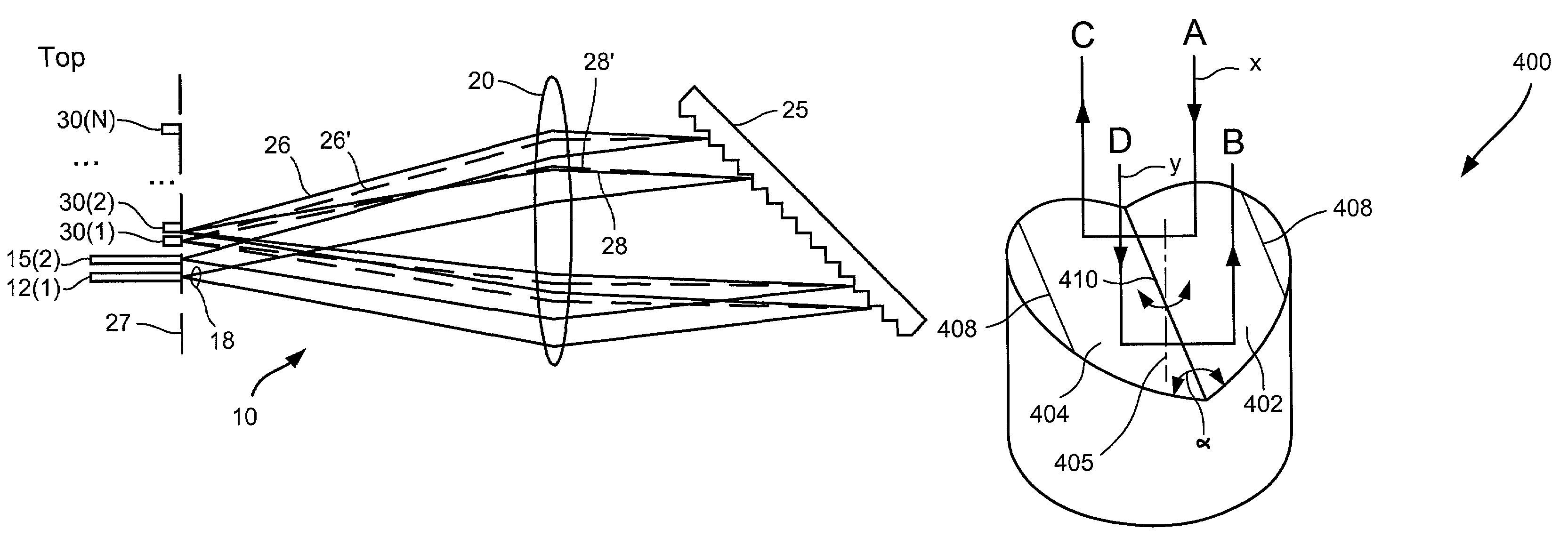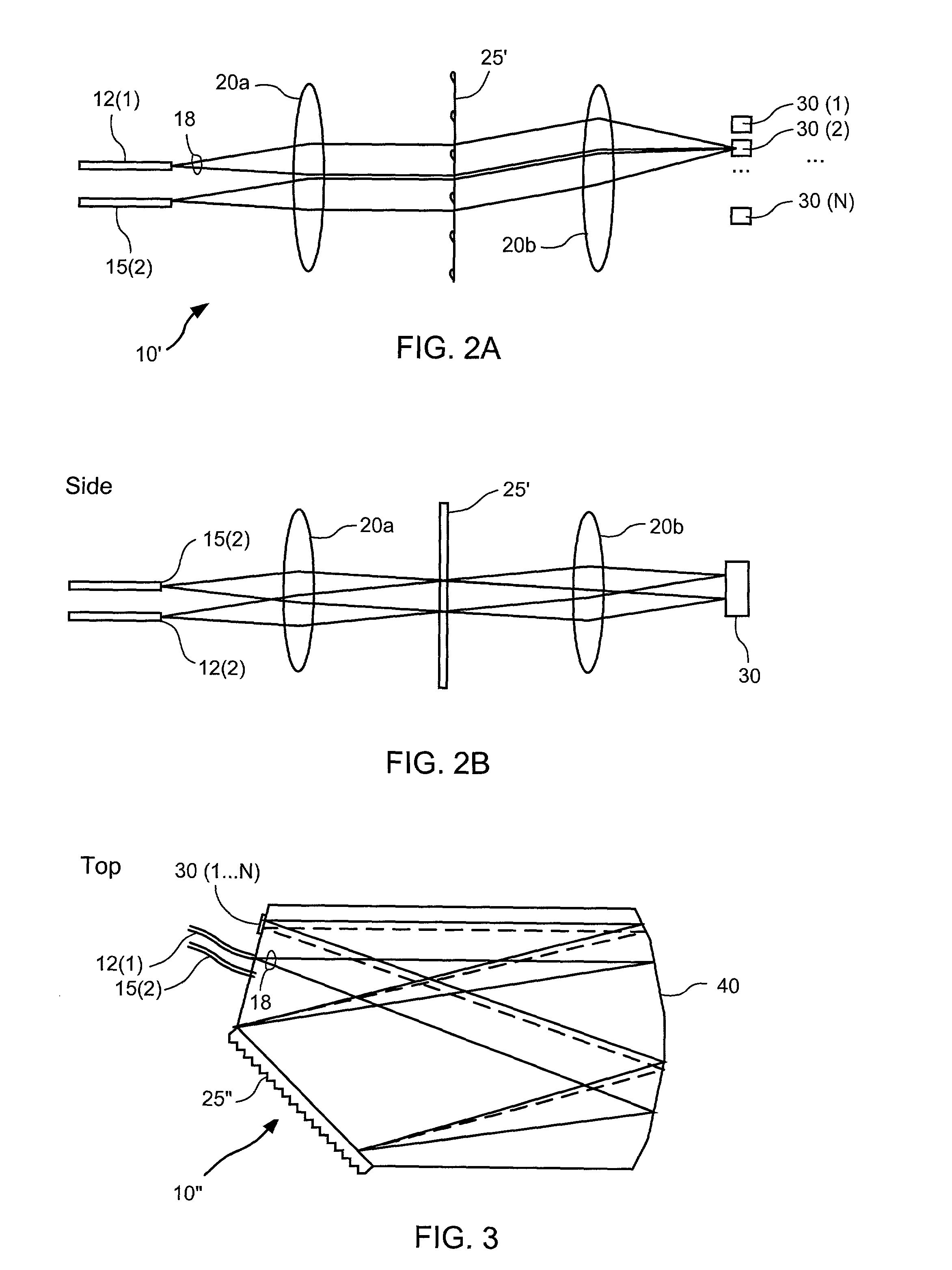Two-by-two optical routing element using two-position MEMS mirrors
a technology of optical routing and mirror, applied in the field of fiberoptic communication, can solve the problems of difficult and expensive scaling of dwdm networks using sonet/sdh technology, and the explosion of global bandwidth demand, and achieve the effect of flexible and effective routing of spectral bands
- Summary
- Abstract
- Description
- Claims
- Application Information
AI Technical Summary
Benefits of technology
Problems solved by technology
Method used
Image
Examples
Embodiment Construction
1. Introduction
[0025]The following description sets forth embodiments of an optical routing element according to the invention. The general functionality of the optical routing element is to accept two optical signals, each having a plurality of (say N) spectral bands at a pair of input ports, and to direct the spectral bands according to their individual wavelengths to either of a pair of output ports. Embodiments generally include a free-space optical train to provide optical paths for the spectral bands and a routing mechanism that includes a plurality of dynamically configurable retroreflecting elements arranged to route the individual spectral bands as desired. As used herein, a “retroreflecting element” causes an incident optical ray to be directed along a path having a projection on the path of the incident ray that is opposite in direction to the incident path. In a special case, the redirected and incident paths are parallel but opposite in direction.
[0026]The term “free sp...
PUM
 Login to View More
Login to View More Abstract
Description
Claims
Application Information
 Login to View More
Login to View More - R&D
- Intellectual Property
- Life Sciences
- Materials
- Tech Scout
- Unparalleled Data Quality
- Higher Quality Content
- 60% Fewer Hallucinations
Browse by: Latest US Patents, China's latest patents, Technical Efficacy Thesaurus, Application Domain, Technology Topic, Popular Technical Reports.
© 2025 PatSnap. All rights reserved.Legal|Privacy policy|Modern Slavery Act Transparency Statement|Sitemap|About US| Contact US: help@patsnap.com



